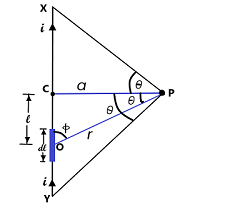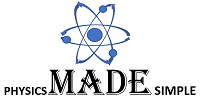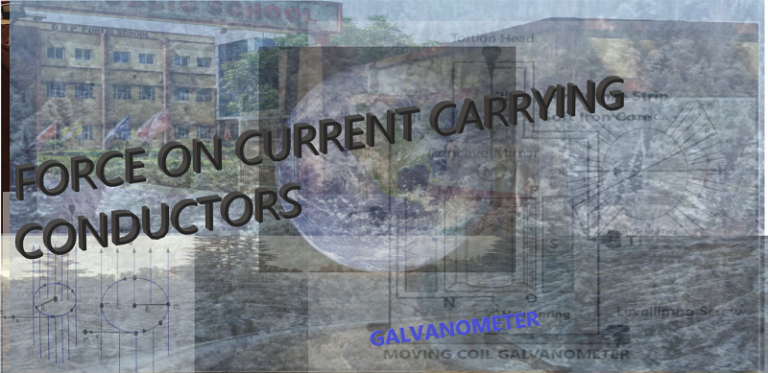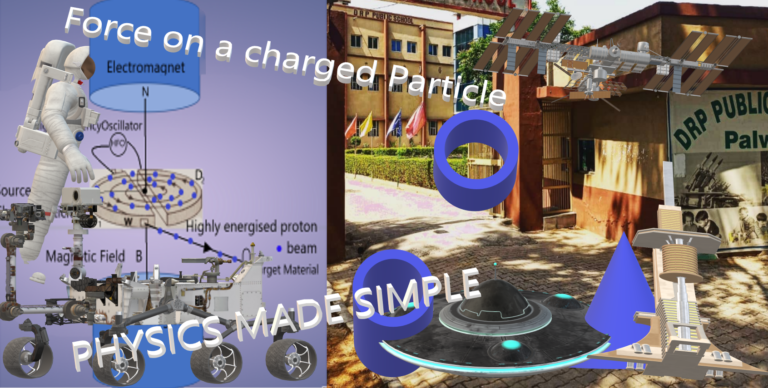Biot savart’s law, Magnetic field due to a straight conductor, circular loop, ampere’s circuital law application of ampere’s circuital law, rules for direction of magnetic field-12 cBSE
Introduction:
The space around the conductor gets modified as a result of an electric current when passed through it. This modification in the space is in terms of the force experienced by a magnetic pole when brought near this current carrying conductor. A Danish scientist, Sir Oersted, in 1820, discovered this magnetic effect of current. He in his experiment, passed an electric current through a wire and brought a magnetic needle near it. The magnetic needle got deflected showing the existence of magnetic field.
Oersted experiment led to the discovery that a magnetic field is set when an electric current is passed through a conductor. Stronger the current, stronger will be the magnetic field and vice versa. Later, Biot-Savart did an intensive work over this concept of magnetic effect of current and established a law, called Biot-Savart’s Law which relates the strength of magnetic field at any point due to a current carrying conductor.
Biot Savart’s Law in Magnetic effects of current-12 cBSE
This law is used to find and determine the magnetic field Vectorially at any point near a conductor carrying current and is a fundamental law in electromagnetism.



Magnetic Field due to a straight conductor:
Consider that an electric current I passes through a straight conductor YX. Let P is a point at a normal distance of a from the conductor where The magnetic field is to be found. Now applying Biot Savart Law on an element of conductor of length dl

So, we can write,

Special Cases:


Rules for finding the Direction of Magnetic Field













Magnetic Field due to a long Straight Solenoid:
Suppose that there is a long straight solenoid, wound on a cylindrical core, having n turn per unit length and an electric current I is passing through it as a result the magnetic field is developed which like that due to a magnetic dipole, is uniform well inside the solenoid and parallel to its axis as shown below

Magnetic Field due to a Long Solenoid
In order to find the magnetic field at any point, say K, on its axis well inside the solenoid, we consider, a closed rectangular path, ABCDA of length L as shown in the fig. below

Since n is the no. of turns per unit length of the solenoid, therefore the total no. of turns contained in the closed rectangular path of length L will be = n L. The total current enclosed within the closed rectangular path is = n L I Applying Ampere’s Circuital Law around the closed path, ABCDA, we get



Magnetic Field due to a Toroidal Solenoid
When a long and straight solenoid is bent into the form of a circular ring, then this configuration so obtained is called a toroid. A toroid / a Toroidal Solenoid is also defined as an anchor ring around which a large number of turns of metallic conductor in the form of wire are wound. Let us suppose that such a type of toroidal solenoid is taken under consideration that has radius r, center O and n be the number of turns per unit length of the solenoid.
When an electric current I passes through the solenoid, a magnetic field is produced that will remain constant at all points on the circumference of the ring of the solenoid in magnitude but the direction remains tangential at all points of the ring.


Short questions And Their Answers:
Ques 1: What is a magnetic Effect of Current
Ans: When an electric current is passed through a conductor, a magnetic field is set up around it. The magnetic lines of force make the closed circular path around the conductor. This was observed in 1820 by the Danish scientist Oersted. Later on, the experiment which led Oersted to establish the magnetic field due to the flow of current is called Oersted Experiment
Ques 2: State Biot Savart law.
Ans: Answer: This law states that when an electric current I passes through a small element of conductor of length dl, the magnetic field is developed around it and at a distance, r from an element of the conductor dl is given by

where theta is the angle between the flow of current and the line joining the current element and the point where the magnetic field is to be found
Ques 3: Write down the expression for the magnetic field due to a current element in vector form
Ans:

Ques 4: State the rule that is used to find the direction of the magnetic field acting at a point near a current-carrying straight conductor.
Ans: Right-hand thumb rule and Maxwell’s Corkscrew rule are the rules to find the direction of magnetic fields.
Ques 5: Does a current-carrying Circular coil produce a uniform magnetic field?
Ans: No. The magnetic field produced due to a current-carrying circular coil is not uniform. However, it may be considered uniform at the center of the circular coil.
Ques 6: What is the effect of increasing the number of turns on the magnetic field produced due to a circular coil?
Ans: The magnetic field produced by a coil of N turns is N times the magnetic field produced by a coil of a single turn.
Ques 7: State, Amperes circuital law.
Ans: It states that the line integral of the magnetic field around any closed path or circuit is equal to mu. Naughty. Times the total current. Enclosed in this circuit.
Ques 8: What is the magnetic flux density B at the center of a long straight solenoid?
Ans: The magnetic flux density due to a long straight solenoid at a point well inside it and at the center is:

Ques 9: What type of magnetic field is produced due to a current carrying a straight solenoid?
Ans: The magnetic field produced by a straight solenoid carrying an electric, is identical to that produced by a magnetic dipole or a bar magnet.
Ques 10: In Fig.1, is Shown a circular loop carrying current I, Show the direction of the magnetic field with the help of the lines force.

Ans: Ans: The direction of the magnetic Field due to the current loop as in Fig.001, is found by applying “ The Right Hand Thumb Rule”. The direction of magnetic field B is perpendicular to the plane of the loop and in the outward direction. as shown in the figures. 002 and 003.
Ques 11: What is A Toroid?
Ans: Ans: When a long straight solenoid is bent in the form of a circular ring then it becomes a Toroid. Thus, when a large number of turns of a metallic wire are wound on an anchor ring, we get the Toroid.
Summary:
- The source of the electric field is an electric charge since an isolated magnetic pole does not exist therefore, the source of the magnetic field is not a magnetic charge.
- The magnetic field at a point is zero when the point of observation lies along the length of the current element. While on the other hand, the magnetic field is maximum when the observation point is located along a direction perpendicular to it.
- When an electric current I passes through two concentric metallic rings of radii R and r in the same direction, then the net effective magnetic field at their common center will be

- When an electric current I passes through two concentric metallic rings of radii R and r in opposite directions then the net effective magnetic field at their common center will be

- Magnetic field due to a current-carrying circular conductor is non-uniform but for practical purposes, it may be considered uniform.
- Magnetic field due to a part of the current carrying circular metallic coil is

Where theta is the angle at which the circular part of the current-carrying ring subtends at its center
The magnetic field is maximum at the center of a circular coil carrying current than at any other point on its axis




9 Comments